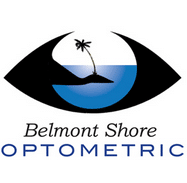Glasses come in all sizes and shapes today as do the lenses. From basic to upgrades, there are lens options today that can suit any budget and any need. Your doctor and optician will determine your prescription, and based on the description and a review of your lifestyle, your optician can provide you with the best options for you.
Some of the options that you may have with your lenses include:
- Hi-index
- Aspheric
- Digital
- Anti-reflective coating.
All you have to do is pick the frames to go with your lenses, and then you are ready to see better and see clearer in the style that suits you.
HI-INDEX: Thinner and Lighter
If you have a strong prescription, you likely know all about thick lenses. High index lenses are the answer to the thick lens problem. Lighter and thinner, these lenses are compatible with most prescriptions but are best suited for stronger prescriptions.
Hi-index lenses are classified according to the respective refractive index, which is an indicator of the lens thickness: the higher the refraction, the thinner the lenses. Regular plastic lenses have a refractive index of 1.50 while high index plastic lenses have a refractive index ranging between 1.53 and 1.74
Lenses that have a refractive index closer to 1.53 are about 15% thinner than regular plastic lenses. Lenses with a refractive index closer to 1.74 are more than 50% thinner than regular plastic lenses, and as such, they are the thinnest lenses available on the market.
Price points are also in accordance with the refractive index. The thinner and lighter the lens is, the pricier the lens usually becomes.
The one disadvantage to hi-index glasses, however, is the higher rate of glare. With the higher the index, you may want to add an anti-reflective coating to help prevent the additional reflection of light.
ASPHERIC: Aesthetically Appealing
Aspheric lenses is technological at its coolest. The rounded curve of yesterday’s eyeglasses are now trimmed down to size for a slimmer, flatter, and more flattering profile. Conventional lenses have lenses with a spherical curvature while aspheric lenses are a little more complex in that the front surface gradually changes from the center to the outer edge of the lenses for a streamlined appearance.
Aspheric lenses can be compatible with most prescriptions but they are ideal for far-sighted prescriptions. Farsighted prescriptions were once those lenses with a thicker center necessary to accommodate the prescription and correct the farsightedness. The stronger the prescription for farsightedness, the greater the bulge at the center of the lenses.
With aspheric lenses, there will still be an ever-so slight curvature at the center, but they are by far flatter, lighter, and thinner.
Another advantage to aspheric lenses is the gift of superior peripheral vision. The downside, however, is the increase in glare due to the flatter surface. An anti-reflective coating is recommended to correct the glare.

DIGITAL: Sharper Vision
Like your TVs, things are a little sharper in the digital age. That’s the same with your eyes when combined with digital lenses. This is true even if you have 20/20 vision. For instance, have you experienced impaired sight, such as:
- Glares;
- Halos; or
- Blurs.
You may not require a prescription to correct these vision issues, but you can still get digital glasses to prevent the glares, halos, and blurs.
Digital high-definition lenses, known as free form lenses, incorporate cutting-edge lenses to make everything around you sharper and clearer. Free form lenses can be individually tailored or custom made utilizing power increments of 0.01 diopter (as compared to 0.25 diopter in glasses of yesterday).
Digital glasses are great for any time of the day, whether in the sun or at night.
ANTI-REFLECTIVE COATING: No Glare
Anti-reflective coating is a layer placed on lenses to prevent glares, thus, reason why it is also known as AR coating or anti-glare coating. The anti-glare prevents reflections from both the back and front surfaces of the eyeglasses.
The anti-glare helps with:
- Reading
- Computer use
- Driving at night.
Another benefit of this coating is the clarity of the lenses, which allows people speaking to you to concentrate on your eyes and not your glasses.


